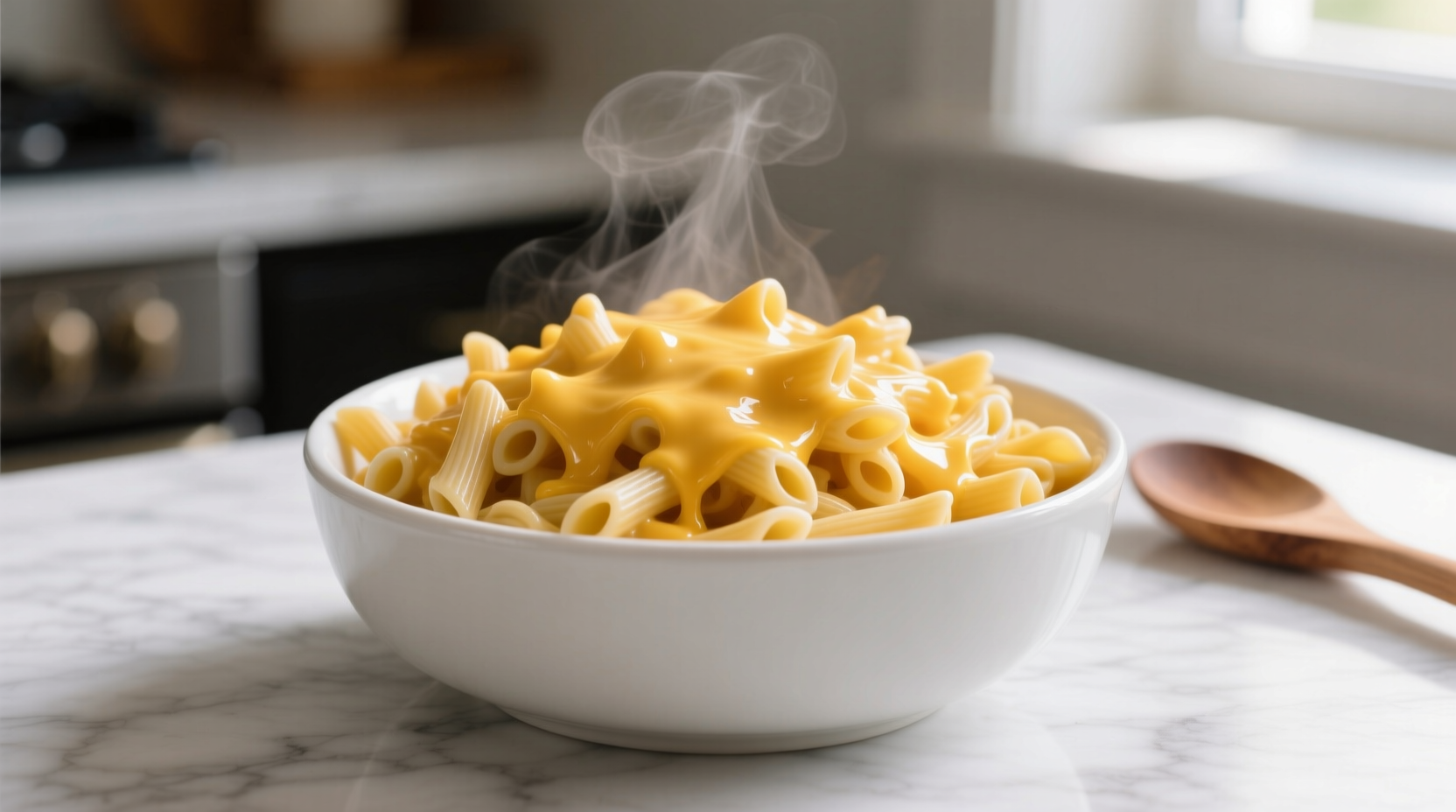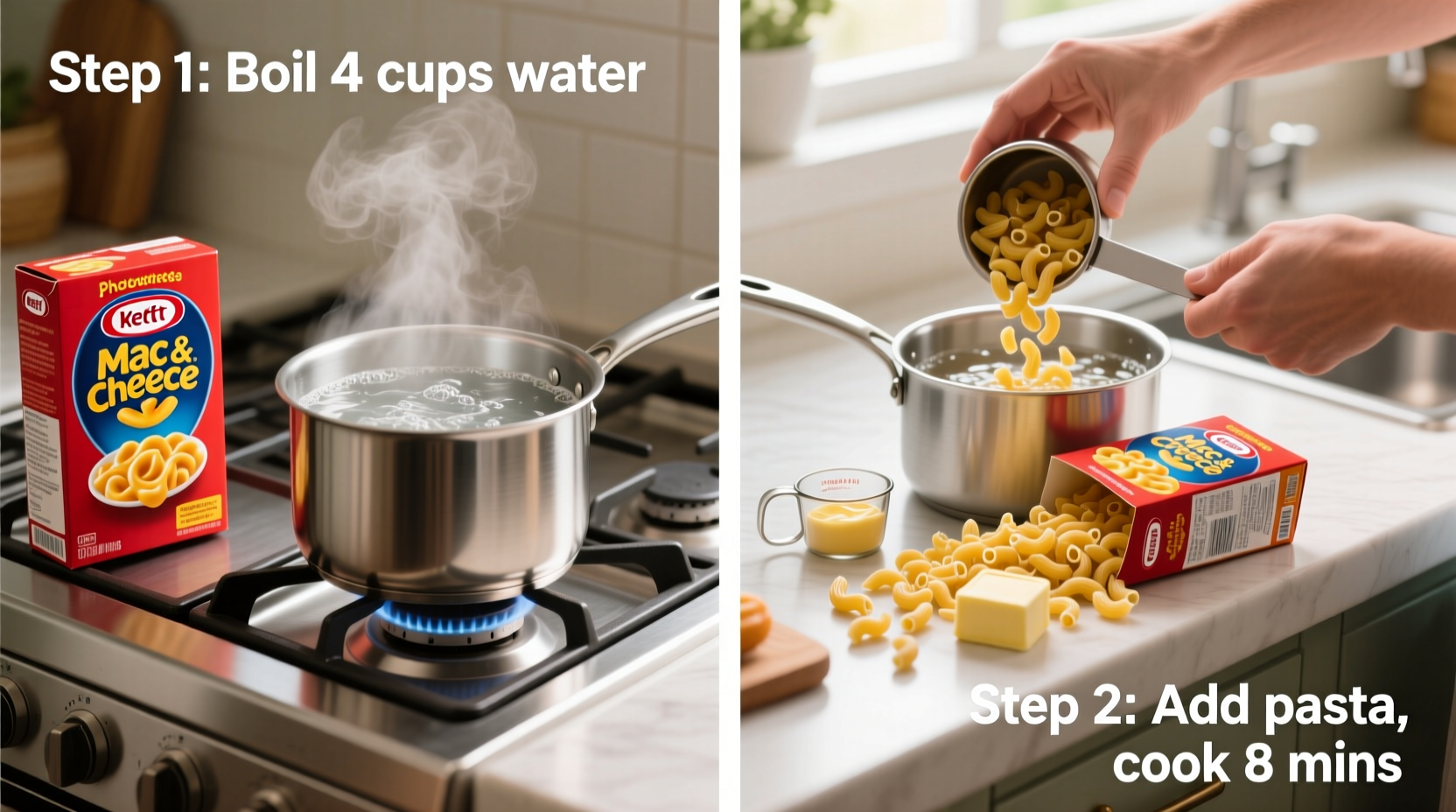The Foolproof Method for Perfect Kraft Mac and Cheese
For over 85 years, Kraft Mac and Cheese has been America's go-to comfort food. But many home cooks end up with clumpy, dry, or unevenly cooked results. The secret lies in precise water measurements, timing, and temperature control. This guide reveals the exact professional technique for consistently creamy, perfectly textured mac and cheese every time.
What You'll Need
Before starting, gather these essentials:
- Kraft Macaroni and Cheese box (any size)
- 6 cups water per box (critical ratio)
- 1/4 cup milk (whole milk recommended)
- 2 tablespoons butter
- Medium saucepan with lid
- Whisk (not a spoon)
- Colander for draining
| Cooking Method | Water Amount | Cook Time | Texture Result |
|---|---|---|---|
| Standard Stovetop | 6 cups | 7-8 minutes | Creamy, even coating |
| Water-Reduced | 4 cups | 9-10 minutes | Dry, clumpy sauce |
| Extra Water | 8 cups | 6-7 minutes | Watery, weak flavor |
Step-by-Step Cooking Process
Preparation Phase
Measure ingredients before starting. Have milk and butter ready at room temperature - cold dairy causes cheese sauce to seize. Use a timer; don't rely on visual cues alone. The USDA Food Safety and Inspection Service recommends keeping cooked pasta above 140°F to prevent bacterial growth during preparation (source).
Boiling Water Correctly
Bring 6 cups of water to rolling boil in medium saucepan. Add 1 teaspoon salt to enhance flavor absorption. The National Pasta Association confirms salted water improves pasta texture and taste (source).
Cooking the Pasta
Add macaroni to boiling water. Stir immediately to prevent sticking. Cook uncovered for exactly 7-8 minutes (check box instructions). Stir every 2 minutes. Properly cooked pasta should be al dente - tender with slight resistance.
Draining Technique
Drain immediately in colander. Do not rinse. Residual starch helps cheese sauce adhere. Return drained pasta to warm pot - never cold surfaces that cause rapid cooling.
Making the Cheese Sauce
Add milk and butter to pasta. Stir 30 seconds until butter melts. Sprinkle cheese powder evenly over pasta. Whisk vigorously in circular motion for 1 minute. The American Chemical Society explains that proper whisking creates emulsion between dairy proteins and fat molecules for smooth texture (source).
Avoid These Common Mistakes
- Using wrong water ratio: Too little water creates starchy, gummy pasta
- Overcooking pasta: Results in mushy texture that won't hold sauce
- Adding cold dairy: Causes cheese sauce to separate and become grainy
- Insufficient stirring: Leads to uneven cheese distribution and clumps
Professional Upgrades for Better Results
While following basic instructions gets decent results, these chef-approved tweaks elevate your dish:
- Add 1/4 cup pasta water when mixing cheese sauce for silkier texture
- Stir in 1/2 cup shredded sharp cheddar for richer flavor complexity
- Finish with pinch of cayenne for subtle depth (without noticeable heat)
- Sprinkle paprika on top before serving for visual appeal
When to Choose Microwave vs Stovetop
Understanding context boundaries improves results. Stovetop works best when:
- You need precise texture control
- Preparing multiple servings
- Adding additional ingredients
Microwave works acceptably only for single servings when:
- You're in extreme time constraints
- Using exact water measurements (1/4 cup per serving)
- Stirring thoroughly at each interval
Storage and Reheating Guidelines
Store leftovers in airtight container within 2 hours of cooking. Refrigerate up to 3 days. For best reheating:
- Add 1-2 tablespoons milk per cup when reheating
- Warm slowly over low heat, stirring frequently
- Microwave in 30-second intervals at 50% power
Why This Method Works
The science behind perfect mac and cheese involves protein coagulation and starch gelatinization. Cooking pasta in sufficient water prevents starch overload that causes gumminess. Adding dairy at correct temperature (120-140°F) allows casein proteins to emulsify properly without separating. The Food Science Institute at Kansas State University confirms these principles in their cereal science research (source).

Troubleshooting Guide
Dry or clumpy? Add 1 tablespoon hot milk and whisk vigorously. Too watery? Cook 1-2 minutes over low heat to evaporate excess moisture. Bland flavor? Add pinch of salt and dash of mustard powder to enhance cheese notes.











 浙公网安备
33010002000092号
浙公网安备
33010002000092号 浙B2-20120091-4
浙B2-20120091-4